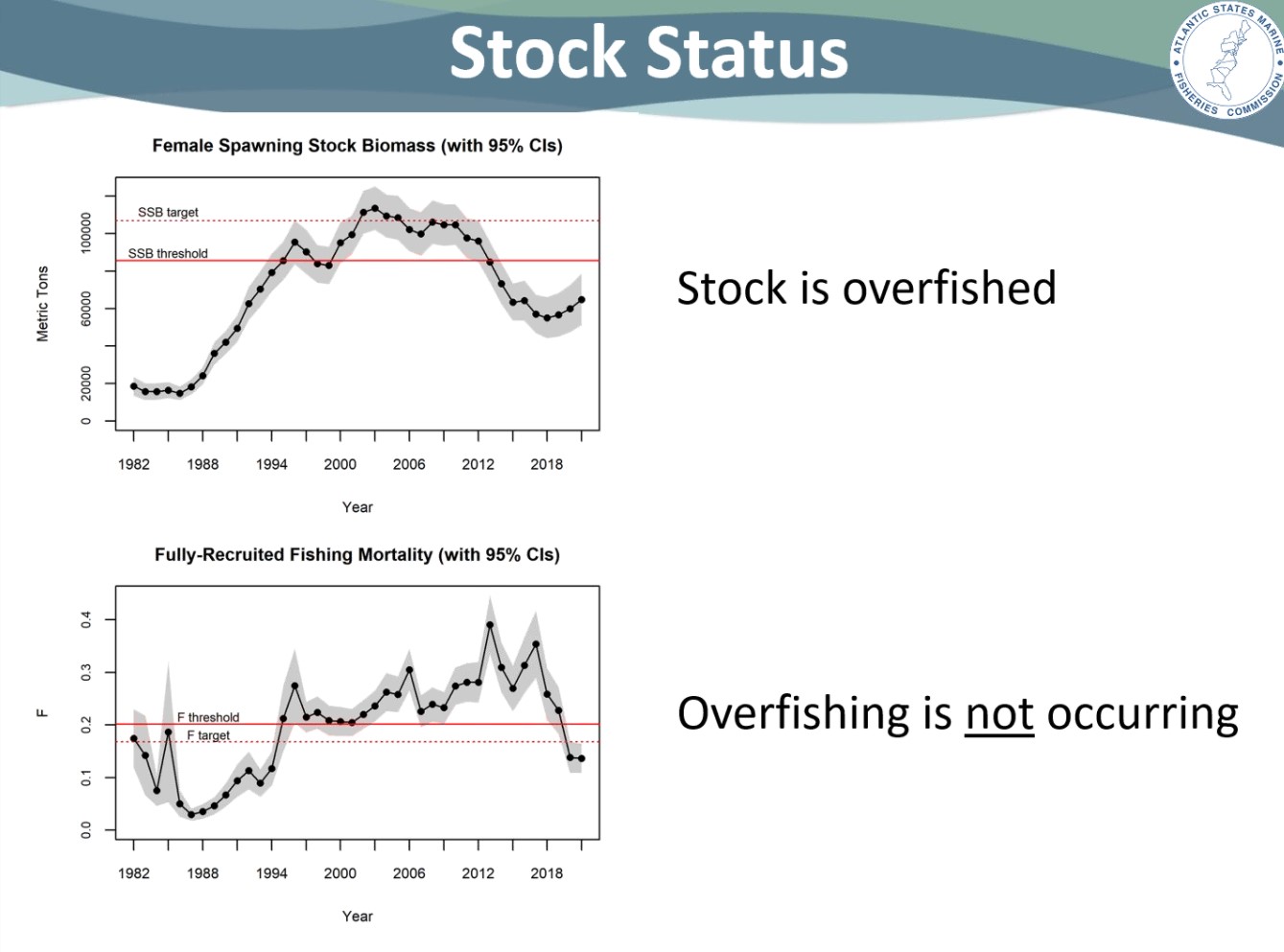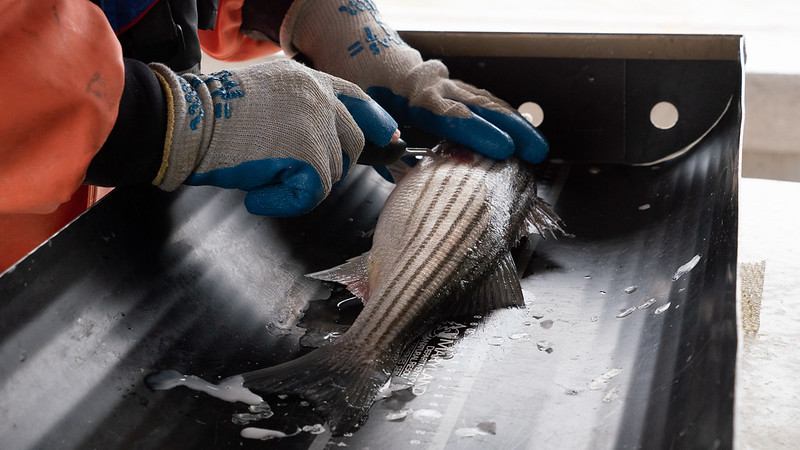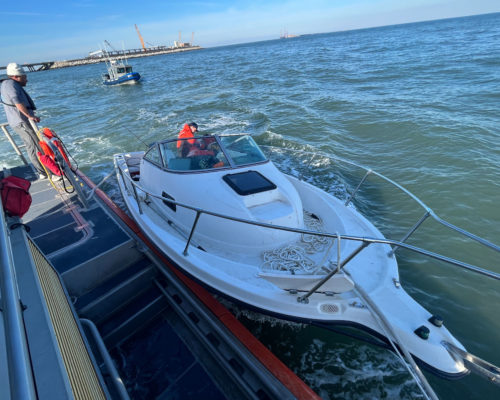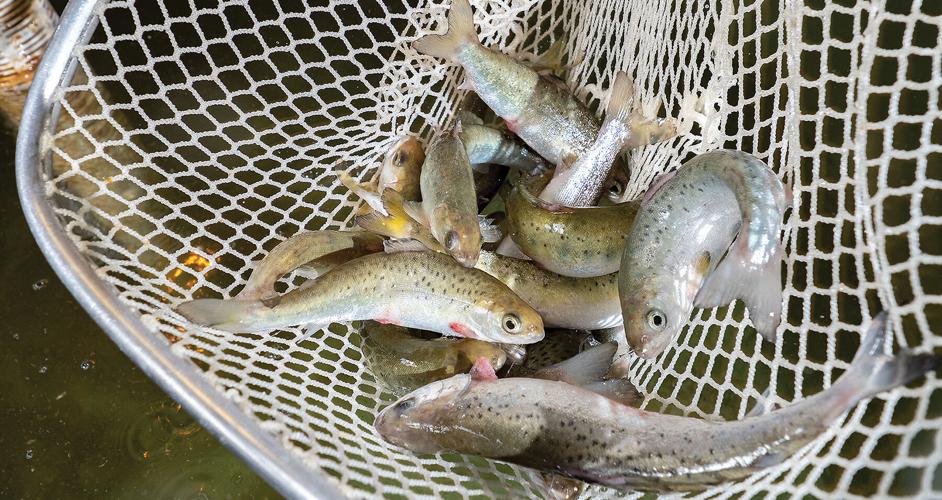The fishery managers responsible for steering the Atlantic coast’s rockfish population to safe levels announced some positive news—something we haven’t heard lately in relation to rockfish.
On Tuesday the Striped Bass Board of the Atlantic States Marine Fisheries Commission (ASMFC) accepted an updated stock assessment by its Technical Committee (TC), which finds the population looks promising enough that no additional harvest cuts will needed to be made. (Different conservationists have, at times, called for a striped bass fishing moratorium).
The bad news first: The stock assessment finds that in 2021, the rockfish stock was still overfished but no longer actively experiencing overfishing. The female spawning stock biomass was estimated to be 143 million pounds, below the 188-million-pound threshold at which fishery managers must take action. However, ASMFC’s committee notes that the female spawning stock has, at least, been trending modestly upward for the past three years.

The committee estimated total fishing mortality, including both recreational and commercial, at 0.14, well below both the fishing mortality threshold of 0.20 and the goal mortality number.
The committee used the fishing mortality and spawning stock biomass levels from 2021 (and factored in poor recent spawns in the upper Chesapeake) to conservatively project the Atlantic rockfish spawning stock biomass forward through 2030. Under these conditions, it saw a 78.6 percent chance that the stock would be at or above the stock target in 2029, Amendment 7’s rebuilding deadline.
This encouraging result means that no further reductions need to be taken now, so the fishing limits in place under the previous Amendment 6 of the management plan will continue until the Board finds it necessary to take further action.
“This 2022 assessment was the first check-in point for progress toward stock rebuilding by 2029,” said Board Chair Marty Gary with the Potomac River Fisheries Commission. “It is extremely important that we continue to monitor fishery removals and conduct regular stock assessments to keep evaluating rebuilding progress and stay on track.”
The next stock assessment update is scheduled for 2024, and the Board will review the 2022 removals as soon as the data are available to evaluate whether catch remains at sustainable levels. The Striped Bass Board has scheduled the next benchmark stock assessment for 2027.
“Be optimistic but stay cautious,” advised the Chesapeake Bay Foundation’s Senior Regional Ecosystem Scientist Chris Moore.
Fewer people are fishing for rockfish because the stock is low, and those who do are releasing more big fish. The public’s actions are beginning to make things better.
“We are now returning trophies,” Moore noted. “If we stay the course, the stock should recover. The big catch is that ASMFC has limited control over recreational anglers. As the rockfish stock recovers, more anglers will target them. We’ll need to keep close track of fishing mortality, as well as hope for better spawning success ahead in the Chesapeake.”
“Here in the Chesapeake Bay region,” he continued, “efforts to reduce release mortality and improve water quality are paramount to helping ensure the continued recovery of this species. Recent studies have shown a lack of suitable habitat for striped bass in the Bay during the summer, due to high water temperatures and lack of oxygen. Increasing our pace of pollutant reductions and ensuring that our fishing seasons are designed to reduce stress on fish in summertime are critical to helping restore this iconic Bay species.”
-John Page Williams




